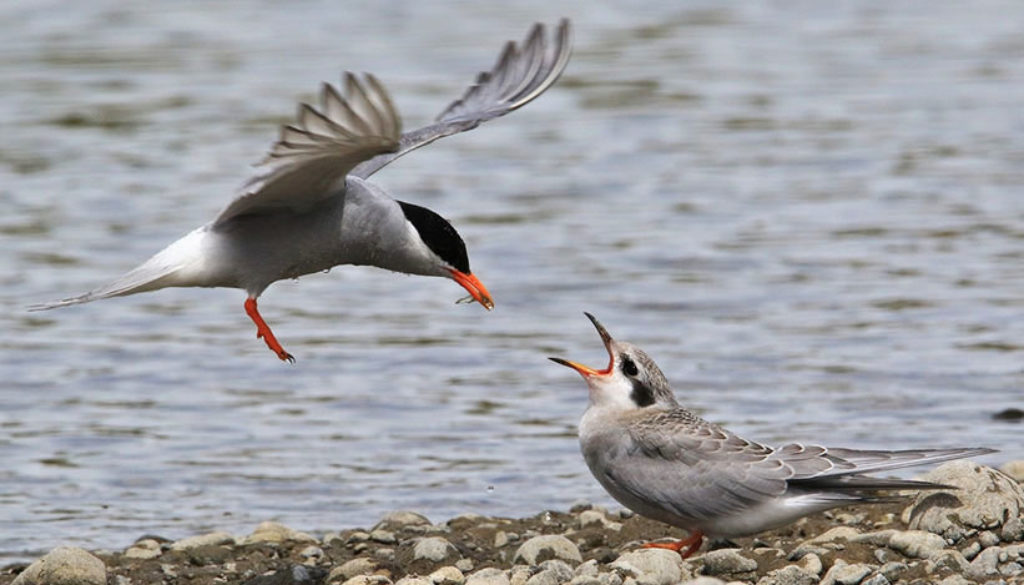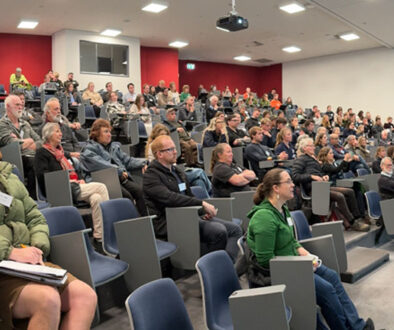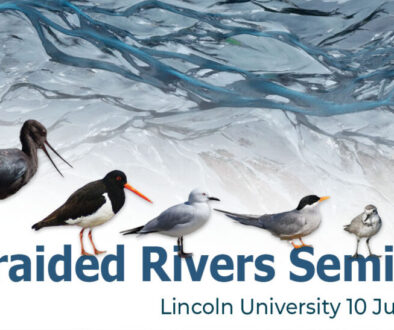Newsletter #50
Tēnā koutou,
I hope you all had a wonderful Christmas and have recovered from New Year celebrations. Our next meeting will be 2.00pm, Friday 24 January at the DOC office, 31 Nga Mahi Road, Sockburn, Christchurch. As always, everyone is welcome to attend even if you are not a member. I believe that members of the Orari River Protection Group will be there to let us know what\’s been happening down their end of Canterbury this past season (don\’t hold me to that, though, as it\’s not confirmed).
While this is not a BRaid related topic, at least not directly (more on that below), I feel compelled to touch on the unfolding ecological tragedy occurring in Australia. I grew up in there, exploring the bush, coastal rivers and beaches, bringing home sick or injured wildlife (even managing to save the odd one), and a life-long interest in dynamic ecosystems and climate change. In 2008, I had intended to move to cooler climes in the Victorian Alps or Tasmania. Instead, I moved to New Zealand, primarily because I\’d read the Garnaut Review on Climate Change commissioned by the Australian Government. (I have loaded my copy here and added subsequent updates and items on Australian water problems water problems at the end of this newsletter.) The Garnaut Review, specifically Chapter 5, is now the centre of a political storm, as it warned the effects of extreme drought and catastrophic bush fires would be seen by 2020 (p117-118). I think Dr Tanya Latty from Sydney University sums up our collective inability to articulate let alone process raw emotions at the moment, in an interview with the NY Times:
As an ecologist, it’s a very tragic thing to find yourself having to think about: What if my species is now extinct?”
New Zealand is not immune from the threat that climate change is bringing to our unique ecosystems: progressively wilder weather, greater demand for reliable water, larger floods and deeper droughts, pressure to produce more food on rapidly degrading soils, agriculture and weeds forcing braided rivers into ever-diminishing spaces, changing predator guilds, and the demand to protect property, infrastructure, the economy, and of course that favourite political football, jobs. Largely absent from conversations around climate adaptation and mitigation in New Zealand is the critical, not optional role that healthy ecosystems play in mitigating risks and helping us prepare for and adapt to what\’s coming. Ecosystem services have been taken for granted, so policies to protect them have easily been sidelined in the face of demands like the ones I\’ve outlined above (especially the mere hint of job losses). It\’s near impossible to place a dollar value on the critical life supporting functions of healthy ecosystems. So let\’s try running a cost-benefit analysis using another form of currency. Let\’s calculate the amount of CO2 that can be sequestered in native forests. Turns out natives can\’t compete with pine forests in time to meet our legally binding emission\’s targets. \”The right tree in the right place\” is just a bit of salesmanship, not a panacea.
Over the coming months, outside my role as the manager of BRaid, I’ll be exploring how we can reshape the narrative so that biodiversity is not regarded as something that can and indeed must be sacrificed in the face of climate change, but is in fact critical to building climate change resiliency. I welcome input.
Braided Rivers Forum, 08 July 2020
We\’re still in the process of developing this, but it\’s all coming together (in my head at least), and I should have something less vague to report at the next meeting. Meanwhile, pencil the date in your calendar. If you would like to present or be part of the afternoon discussion panels, please contact me. If you know final year undergrad or postgrad students who would like to present, please have them contact me as want to encourage and support the next generation of ecologists.
Bird surveys
Firstly, thanks to Steve Attwood for another fabulous photo of the black-fronted tern feeding a chick at the top of this news post. Steve took the photo at the Ashley River estuary a few days ago and made this comment, \”…pleased to see a lot of fledgling black-fronted tern, still being fed by their parents. Hopefully, a sign up-river breeding was successful. As usual, the youngsters were sitting on the ground calling for food from any bird passing overhead. I often wonder if this is a good survival strategy given it draws attention to an inexperienced bird sitting on the ground!\”
If you have completed bird surveys, please send me a copy of your report if you have not already done so. I add reports to each \’river\’ page on the BRaid website so that they are accessible to everyone. The exception is the Ashley River reports, which I add to their dedicated site on the general and annual reports\’ pages and also their blog.
Maintaining records is hugely important for long term understanding of trends and adapting to changes. How much would we all wish we had access to records going back 100 years or more?
Once again, thanks to everyone for providing updates and news. Please keep it coming!
Ngā mihi,
Sonny Whitelaw manager@braid.org.nz
Reports, news, and updates
- Kaikoura South Bay banded dotterels: much happening this season. Firstly, congratulations to everyone who submitted to the Freedom Camping Bylaw, which is now in effect. Stay up to date with Ailsa (& Ted\’s!) amazing work happening by visiting their Facebook page.
- Elsewhere in Kaikoura, a red-billed gull study reveals predator impacts over 52 years.
- DOC\’s first report on the potential impacts of climate change. This one is on: Waitunu Lagoon, Southland.
- DOC deployed life rafts to help the black-billed gulls nesting in the remains of the former PWC building in Christchurch. Listen to the Radio NZ report here.
- Great photos of the Ashburton black-billed gull colony late last year.
- Status reports of birds following the large December flood events in Canterbury.
- Excellent photos and report from Richard Nichol of the black-billed gull colony at the confluence of the Hope and the Boyle Rivers. Eyes on the ground and crucially, follow-ups of breeding success, is a hugely important part of the big picture, especially following flood events during the breeding season.
- Also, reports and pictures from Peter Langlands and a follow up from Nick about the wrybills at the Ashley River Estuary.
- The Canterbury Southern Black-backed Gull/ Karoro management strategy is now available.
- As too is Te Manahuna Aoraki annual report for 2018/2019.
- What happens when rivers like the Selwyn, Orari, Pareora and Waipara run dry? What does this mean for our other lowland and smaller braided rivers as the climate changes?
- The intense hailstorm that struck Canterbury in November killed hundreds of white-fronted terns and an estimate 100 black-billed gulls nesting on the Rangitata River mouth. While this is known to happen elsewhere (an August hailstorm in Montana killed or maimed some 11,000 birds), Ian Fraser from DOC said this was the first time he\’d seen anything like it here in NZ.
- No intended segue from the above story, but sheep and cow bones can help repair broken wings far better than other methods.
- Critically endangered long-tailed bats pekapeka live around our braided rivers: celebrating a year\’s trapping work.
- Stewart Island deer pose threat to critically endangered southern New Zealand dotterel.
- Starving rats and mice prey on birds and reptiles after mega-mast food runs out…and mega masts are likely to happen more often as temperatures increase.
- Five new trapping tools unveiled to achieve Predator Free 2050 mission including the \’Spitfire\’ (Youtube video).
- Boffa Miskell are developing long-life lures for rodents, possums and mustelids as a cost-effective alternative to food-based baits that deteriorate quickly in the field.
- Feral cat problem? Check out the the \’Felixer\’ from across the ditch…( hoping they can deploy these in recently burned areas in Aus. As Phil Seddon\’s research shows from field work in Otago, cats swarm into newly burned areas to feast on survivors).
- Federated Farmers and a Southland MP pointing to birds for polluting rivers. If you read this or have to answer the same argument parroted at me at some community meetings, bear in mind that poop from ruminants and humans in waterways is far more dangerous to humans than bird poop.
- Cultural adviser helping locals understand the importance of healthy land and water: excellent interview with Makarini Rupene.
- The Aotearoa NZ Science Journalism Fund awards great science journalism. Take a bit of time to read their stories: they\’re worth it.
- 10 new birds discovered in \’lost world\’ (National Geographic).
- Birds are migrating earlier in recent decades, which could disrupt feeding and nesting cycles (Science News).
- Bird eggs laid in cold climates are darker, which may keep eggs warm (Science News).
- Rising temperatures may be making birds smaller (Science News).
- Do you know what\’s the largest migration on Earth? (NASA).
- These parrots are the first birds observed showing kindness to others (Max Planck Institute for Ornithology).
Australian fires and water wars
- Magpies (which are protected native species there) that have been able to escape the fires are mimicking the sound of firetrucks.
- A compelling must watch short video aired by ABC Australia about the theft of water from Australian rivers.
- Plus this 60 Minutes report on Youtube reveals their incredulous \’Water Wars\’ during the drought leading up to the fires…
- Now add this to the mix, and you\’ll appreciate our water problems pale in comparison: Chinese company approved to run water mining operation in drought-stricken Queensland. This happened a few days before Christmas. \”The following day the council implemented extreme water restrictions for residents at the nearby towns of Warwick and Stanthorpe.\”
- Prof. Ross Garnaut public lecture at Australian National University, Nov. 2007
- The Garnaut Climate Change Review (Australia) 2008
- The Garnaut Climate Change Review (Australia) 2011
- The Garnaut Climate Change Review (Australia) 2011: the science




